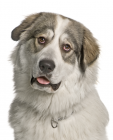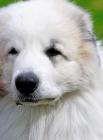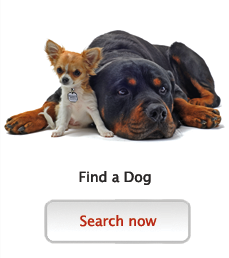Pyrenean Mountain Dog
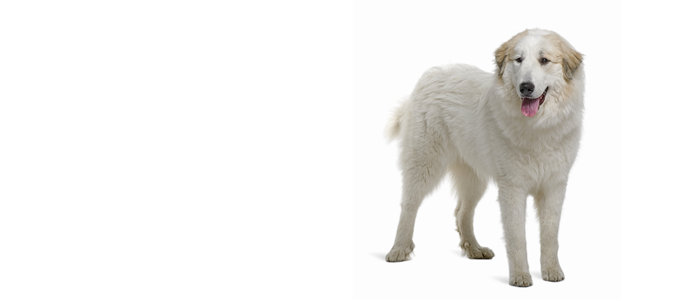
In my own words
“I’ll guard your flock and family no problem, as long as I get a cuddle at the end of the day!”
Got some sheep you need someone to watch over? Or how about keeping an eye on the kids? I’m a great guardian. My size makes me pretty intimidating, don’t you think? I have a pretty mean bark and growl too. No one is getting past me, that’s for sure! You can count on me to look after everything. I love what I do and I’m good at it, even if I do say so myself!
I love being able to run around in the fresh, cool air. I hate the hot weather, I can never be bothered to do anything when it’s hot, can you? It’s so much better running on a crisp winter morning don’t you agree? I love it! So refreshing! In fact, shall we go out now and play in the snow?
My ideal owner(s)
Singles
Families with older children
Shepherds
Cold-climate dwellers
What they say about me
Gentle and patient
Affectionate
Intelligent
Brave and courageous
Please read on, to find out more about me, and whether I will be someone you can be happy with for the next 12 years, or even longer!
Is this Pyrenean Mountain Dog for you?
Test your knowledge about the Pyrenean Mountain Dog
Information essential about the Pyrenean Mountain Dog
Kennel Club Group:
Pastoral
Size:
Extra large: Weight Male 110 – 120 lb (50 – 54 kg) Female 80 – 90 lb (36 – 41 kg)
Height Male 27 – 32” (70 – 80 cm) Female 25 – 29” (65 – 72 cm)
Popularity:
This breed has experienced a dramatic fall off in the number of US AKC breed registrations between 2000 and 2010. In 2000, this breed was ranked at #45 and had dropped to #71 by 2010. In the one year period alone from 2009-2010, the Great Pyrenees experienced a drastic 7-point drop in registrations. Although AKC rankings are not a true gauge of a breed's popularity, the change in the AKC rankings may reflect a realignment in the sources of the dogs available to the general public. A large number of dogs coming from shelters in the South and Midwest U.S., now available through rescue societies, and the introduction of other breed registry services both play a part in the continuing decline in Great Pyrenees' AKC registrations.
Breed History:
The origins of the Pyrenean Mountain Dog can be traced back to before the Bronze Age. They belong to the pastoral group and have been used to guard sheep and cattle in the inhospitable climate of the mountainous regions of Southern Europe. The Pyrenean Mountain Dog is known as the Great Pyrenees in North American and should not be confused with the Pyrenean Mastiff.
This breed has been used by shepherds for hundreds of years including those of the Basque people who inhabit parts of the region in and around the Pyrenees Mountains. One of the first descriptions of the breeds dates from 1407 and by 1675 the breed was a favourite of The Grand Dauphin and members of the French aristocracy. These dogs were also used to smuggle contraband over the border between France and Spain as their sure-footedness enabled them to use passes that were impossible for humans, thereby avoiding detection by custom officials. Early in the 20th century, however, the breed was scarce and Bernard Senac-Langrange and M Dretzen can both be credited for saving the breed. To this day, the breed works in France guarding their flocks of sheep and herds of cattle from bears, wolves and other stock thieves.
The standards for this breed were not completely set even as late as 1874 with two major sub-types recorded: the Western and the Eastern. According to the Great Pyrenees Club of America, this breed is naturally nocturnal and aggressive with predators that may harm its flock. However, this breed can generally be trusts with small, young and helpless animals due to its natural guardian instinct.
Character:
The first Pyreneans that were kept as pets had rather assertive, warrior-like personalities but this breed is now a kind natured, patient and noble pet due to generations of selective breeding. They are courageous and affectionate, mixing well with children and wanting to be included in family activities. They can be aggressive towards other dogs of a similar size and to strangers which makes them excellent guard dogs. Due to their large size and their tendency to bark a lot they are unsuitable for urban areas. This breed is highly intelligent and can be stubborn to they require training from an early age.
Temperament:
In its nature the Pyrenean Mountain dog is confident, gentle and affectionate. They can be territorial and protective of their flock or family when necessary but its general demeanour is composed and patient. This is a strong willed, independent and reserved breed but they are attentive, fearless and loyal to their duties. The Pyrenean Mountain dog will patrol its perimeter and may wander if they are off the lead in unenclosed spaces. They have a tendency to bark and growl a lot unless they are trained against such behaviour. Despite this relative stubbornness, it is quite unusual for the Great Pyrenees to become aggressive or turn on its master. They also need a lot of space in which to roam.
Conformation:
This breed looks as majestic as the mountains that give them their name. They are massive, beautiful and have great elegance. They look strong and yet are well-balanced, unhurried, steady and smooth in movement which is driven by powerful hindquarters. The Pyrenean Mountain dog is unique in that it has double dew claws on each hind leg. They should have a strong head without coarseness and no obvious stop. A scissor bite is correct but a pincer bite will be tolerated. All pigmentation should be black. The eyes should be almond-shaped and dark amber-brown in colour, with an intelligent and contemplative expression. The ears should be fairly small and triangular with rounded tips and set on level with the eyes, lying flat against the head apart from when alert when they may be slightly raised. The neck should be fairly short, thick and muscular adjoining powerful shoulders. The chest should be broad and the back a good length, broad, muscular and straight with a top-line which curves smoothly into the tail. The forelegs should be heavily boned, straight and well-muscled, the hindquarters very strong and heavily muscled. Lack of double dewclaws on each hind leg is totally undesirable. The hind feet may turn out slightly, but the legs must be straight. The feet should be short and compact, with slightly arch.
Coat:
The weather-resistant, double coat consists of a long, flat, thick outer coat of coarse hair which lies over a dense, fine, woolly undercoat. The coat is more profuse about the neck and shoulders where it forms a ruff or mane, more pronounced in males, to fend off wolves that may attack their neck. Longer hair on the tail forms a plume. There is feathering along the back of the front legs and along the back of the thighs, giving a "pantaloon" effect. The hair on the face and ears is shorter and of finer texture.
Colour:
The coat comes mainly in white and can have varying shades of grey, red (rust) or tan around the face (including a full face mask), ears and sometimes on the body and tail. As Pyreneans mature, their coats grow thicker and the longer coloured hair of the coat often fades on those dogs that were not born completely white. Sometimes a little light tan or lemon will appear later in life around the ears and face.
Training:
This breed is highly intelligent and can be stubborn so it is important to train them from an early age. They can be slow to learn new commands and slow to obey.
This breed must be trained from an early age with a firm hand as they are far too strong when fully grown and can be quite independent. Pyreneans are reasonably independent and hardy but can also be stubborn and as such are not really dogs for novices. They can, especially when disturbed, bark a lot so are not suitable for built up areas.
Care:
As this breed has a history as a working dog they have developed as a well-balanced breed requiring little special attention. The coat benefits from brushing once or twice a week but can require daily brushing during shedding. This breed requires regular bathing to keep the coat in good condition.
Health:
The lifespan of a healthy individual is between 11 and 12 years, which is normal for a dog of this size. However, some live for as long as 15 years. If you buy from a reputable, responsible breeder, health problems should not occur. This breed is highly resistant to disease. They are susceptible to bone and joint related problems due to their size. They can also suffer deafness due to the white colouration of their coats.
Exercise:
This breed needs a moderate amount of exercise but can be lazy in warm weather. They are well suited to cold weather and snow. This breed tends to drool a lot and is a messy drinker. Exercising this breed as a puppy must be done gradually to avoid putting excess strain on their bones. Even as an adult, care must be taken to build up exercise gradually. For their size they do not need excessive amounts of exercise but do benefit from free running of the lead as well as regular walks.
You may also like:
If you like Pyrenean Mountain Dogs, you may be interested in breeds of the same size »

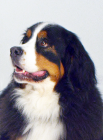


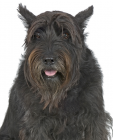
If you like Pyrenean Mountain Dogs, you may like other breeds with similar characteristics »



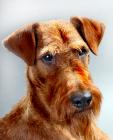

If you like Pyrenean Mountain Dogs, you may be interested in these other pastoral dogs »
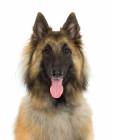
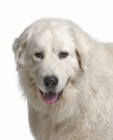


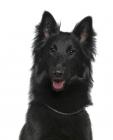
Advice on choosing your breed »
Find an animal shelter or rescue home where a Pyrenean Mountain Dog is waiting for a new home »
The following grid gives a fast track review which covers all breeds. You can apply it to help you decide if a Pyrenean is suitable for you, the environment where you live, your personality and your lifestyle. On the grid, 1= strongly disagree, and 5= strongly agree. For example, if you are looking for a friendly dog, look down the list under Sociability, and you will see that Pyreneans get on well with pets and other animals, scoring 5. You might like to save or print off this section and keep it for reference while you check some other breeds before making your final choice.
Be the first to rate this breed »
|
*PLEASE NOTE: All our breed profiles are general, and all dogs are individuals. Always talk to the breeders and meet the owners you are buying from. Try to meet the dog and its parents if it is a puppy in their home environment.








